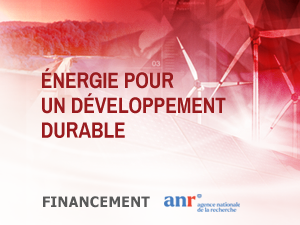Since the emergence of nanotechnology in the 80s, block copolymers are frequently used to design "preforms" to control the structure of inorganic nanoparticles. MANIOC's philosophy is based on the opposite reasoning. It consists in manipulating the microstructure of triblock copolymers by selectively adsorbing their ends on the surface of “stimulable” and “guidable” magnetic particles. The experimental process, allowing the design of non-equilibrium microstructures on demand, can be summarized in three steps:
1. Homogenization of the copolymer matrix via magnetic hyperthermia. This step consists of irradiating the magnetic nanoparticles embedded in the block copolymer with a high-frequency oscillating magnetic field (approx. 1 MHz). The heat dissipation induced by magnetic hysteresis then makes it possible to rapidly heat the material above its order-disorder transition to make it liquid.
2. Organization of the nanoparticles in the form of dipolar chains oriented according to the direction of the applied magnetic field. This step is based on the migration of the magnetized nanoparticles in the liquid matrix.
3. Selective reassociation of block copolymers at the interface with nanoparticles upon cooling. This last step makes it possible in particular to control the geometry of the hard phase of the copolymer based on the structure of the nanoparticles. The field lines can be modified via the geometry of the inductor used. The resulting material is a highly anisotropic thermoplastic elastomer.
The target system is based on a P2VP-b-PnBA-b-P2VP triblock copolymer, or its P4VP-based counterpart, and magnetite (Fe3O4) colloids. While P2VP is well known to interact favorably with the polar surface of inorganic particles via hydrogen bonds, PnBA interacts only weakly with them, providing a marked phase separation at the interface with the particles.
Although MANIOC is resolutely focused on fundamental issues of polymer physics and soft matter, the project will also make it possible to rationalize certain properties of thermoplastic elastomers useful in engineering. In particular, the role of the microstructure and the conformation of the chains on the viscoelastic behavior as well as on the gas permeability will be at the heart of the investigations.


